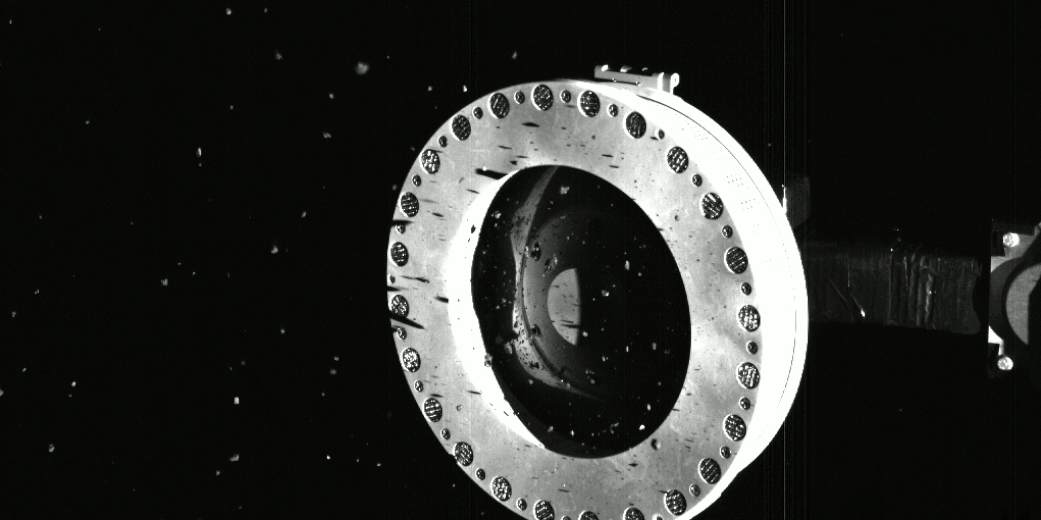OSIRIS-REx collected too much asteroid material and now some is floating away

Update 10/26/2020: NASA plans to stow the sample away Tuesday.
NASA confirmed that the OSIRIS-REx mission picked up enough material from asteroid Bennu during its sample collection attempt on Tuesday. In fact, the spacecraft’s collection chamber is now too full to close all the way, leading some of the material to drift off into space. “There’s so much in there that the sample is now escaping,” Thomas Zurbuchen, NASA’s associate administrator for science, said Friday.
What was supposed to happen: On Tuesday, OSIRIS-REx descended to asteroid Bennu (the object it has studied from orbit for almost two years now, more than 200 million miles from Earth) and scooped up rubble from the surface during a six-second touchdown before flying back into space.
The goal was to safely collect at least 60 grams of material, and the agency expected to run a series of procedures to verify how much was collected. Those included observations of the sample collection chamber using onboard cameras, as well as a spin maneuver scheduled for Saturday that would approximate the sample's mass through moment-of-inertia measurements.
What actually happened: Over the last few days, the onboard cameras revealed that the collection chamber was losing particles that were floating into space. “A substantial amount of the sample is seen floating away,” mission lead Dante Lauretta said Friday. As it turned out, the sample collection attempt picked up too much material—possibly up to two kilograms, the upper limit of what OSIRIS-REx was designed to collect. About 400 grams seems visible from the cameras. The collection lid has failed to close properly and remains wedged open by pieces that are up to three centimeters in size, creating a centimeter-wide gap for material to escape.
It seems when OSIRIS-REx touched down on Bennu’s surface, the collection head went 24 to 48 centimeters deep, which would explain how it recovered so much material.
How bad is it? It’s not terrible! It’s obviously concerning that some material has been lost, but this loss was mostly due to some movements of the arm on Thursday (the material behaves like a fluid in microgravity, so any movement will cause the sample to swirl around and potentially flow out of the chamber). Lauretta estimates that as much as 10 grams may have been lost so far. Given how much was collected, however, this loss is relatively small. The arm has now been moved into a “park” position so that material is moving around more slowly, which should minimize additional loss.
What’s next? The mission is forgoing the scheduled weigh procedure, since a spin maneuver would undoubtedly lead to more material loss, and NASA is confident it has way more than the 60 grams initially sought. Instead, the mission is expediting the stowing of the sample, which NASA expects to take place Monday. After the sample is stowed safely, OSIRIS-REx will leave Bennu in March, and bring the sample back to Earth in 2023.
Deep Dive
Space
How to safely watch and photograph the total solar eclipse
The solar eclipse this Monday, April 8, will be visible to millions. Here’s how to make the most of your experience.
How scientists are using quantum squeezing to push the limits of their sensors
Fuzziness may rule the quantum realm, but it can be manipulated to our advantage.
The race to fix space-weather forecasting before next big solar storm hits
Solar activity can knock satellites off track, raising the risk of collisions. Scientists are hoping improved atmospheric models will help.
Stay connected
Get the latest updates from
MIT Technology Review
Discover special offers, top stories, upcoming events, and more.